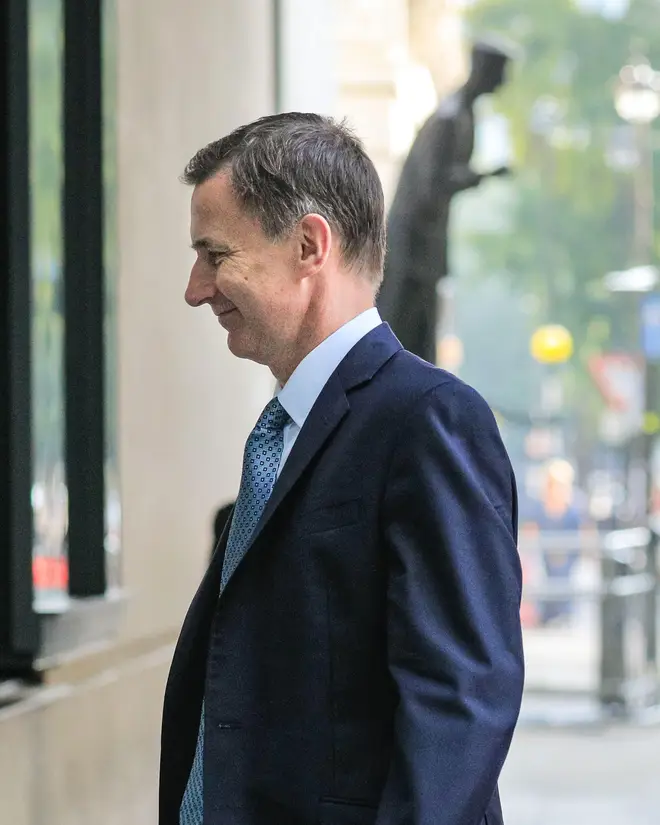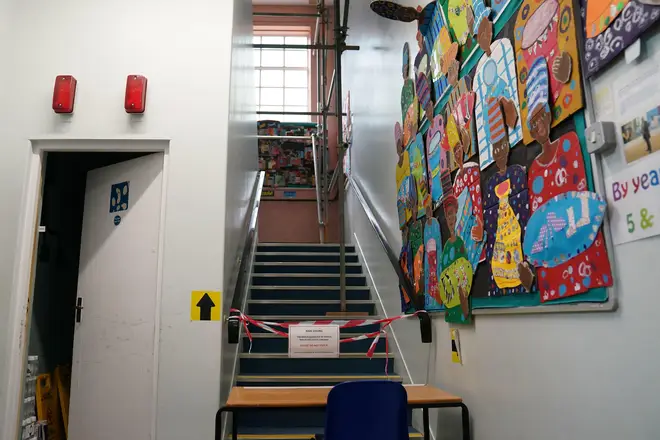
Shelagh Fogarty 1pm - 4pm
4 September 2023, 09:18 | Updated: 7 September 2023, 11:31

Teachers and pupils at hundreds of schools still have no idea whether they will be teaching in unsafe buildings as pupils return to classes after the summer holidays.
Ministers have faced calls to speed up inspections to identify the dangerous concrete after admitting on Sunday it could be months before the full extent of the crisis is known.
While at least 156 schools have been affected so far, the extent of the problem is not yet clear, with the Department for Education so far failing to publish a full list.
Gillian Keegan is set to appear in the Commons on Monday to make an emergency statement addressing the issue. She said a full list would be published this week.
She told LBC today: "Each school has had a case worker assigned and I just want to go round that loop to check that they have been able to get hold of all of the parents and every parent knows."
She is expected to face renewed demands to publish a full list of the schools affected as the Commons returns from its summer recess.
It comes after the chancellor, Jeremy Hunt, said over the weekend that he would “spend what it takes to sort out this problem as quickly as possible” and that the government is doing “everything we can” to resolve it.
He said the government is carrying out an “exhaustive” surveying programme in schools but added: “Obviously, we might find new information in the weeks or months ahead.”

The estimated cost of the crisis to the taxpayer has been put at hundreds of millions of pounds, according to the Times.
This will be taken from existing school budgets for infrastructure, sparking fears it may have a knock-on effect on other repairs in schools.
A source at the education department told the outlet that the repairs had been cut back because “the politics is always in favour of a new school building than rebuilding existing ones”.
But fears remain that “thousands” more buildings could still be at risk of collapse from the crumbling concrete.
Mr Hunt has so far refused to say how many buildings were affected by the crisis, adding he did not want to “speculate” as he denied claims that austerity measures were responsible.
Labour's Shadow Education Secretary Bridget Phillipson told LBC the government's response has been "completely unacceptable", urging the government to release a full list of affected schools.
“Here we are, 13 years on, we’re facing major problems…with crumbling schools and the potential for huge disruption to lots of our children at the start of the school term," Ms Phillipson told LBC.

"I think that’s completely unacceptable but I also believe ministers need to come clean about the full extent of all of this. We still don’t have a full list of schools that have been affected.
"I’m not sure we can be confident that they’ve captured all of the schools that have this crumbling concrete within them."
A Department for Education (DfE) spokesperson said: “We have been clear since Thursday about the number of schools immediately impacted by RAAC. It is vital that schools are given time to inform parents and consider their next steps, with extensive support from our caseworkers, before the list of affected schools is published.
“The education secretary will inform parliament next week of the plan to keep parents and the public updated on the issue.
“Fifty-two of the 156 RAAC cases identified already have mitigations in place, and while some of the remaining projects will be more complex, many will range from just a single building on a wider estate, down to a single classroom.
“We are incredibly grateful to school and college leaders for their work with us at pace to make sure that where children are affected, disruption is kept to a minimum, and in the even rarer cases where remote learning is required, it is for a matter of days not weeks.”